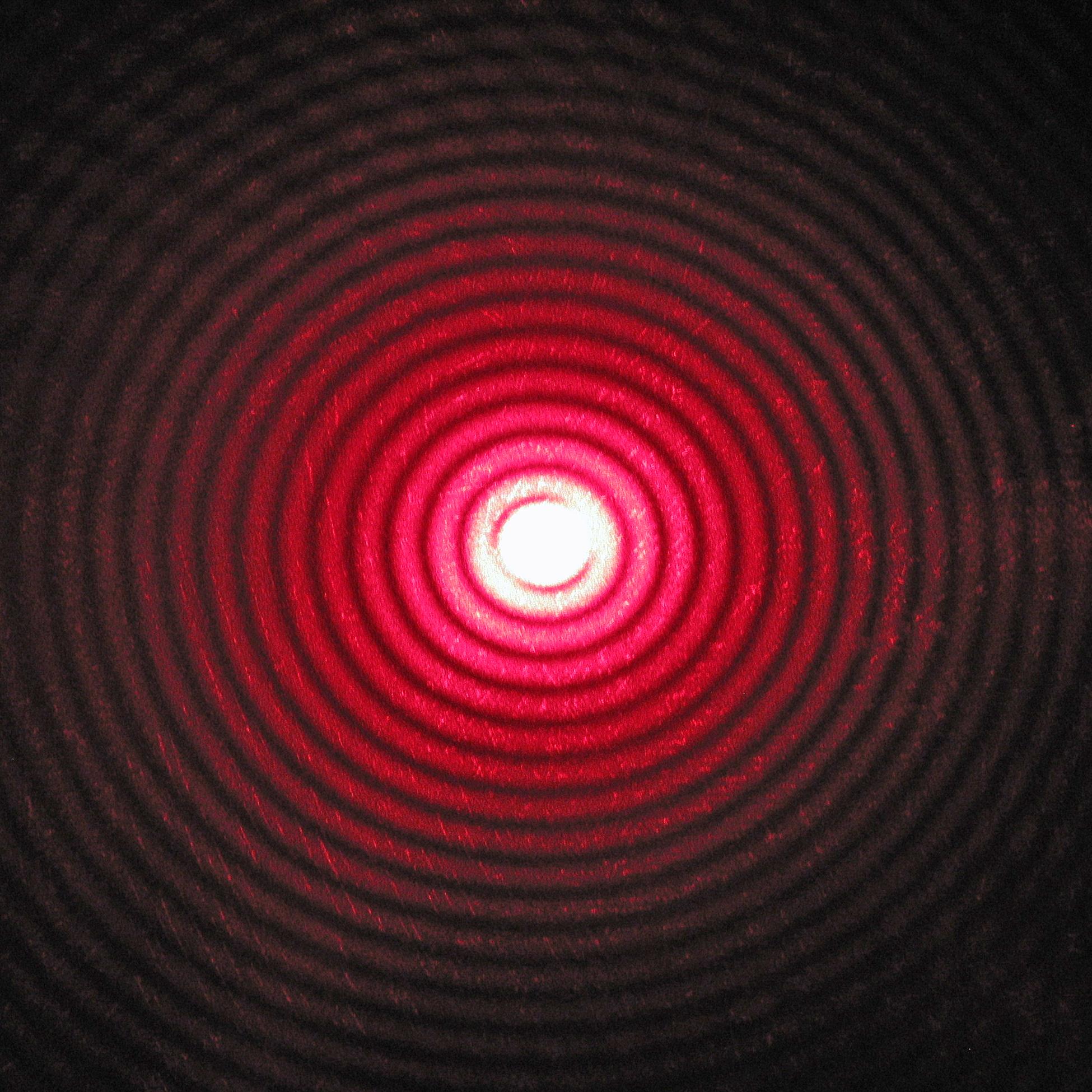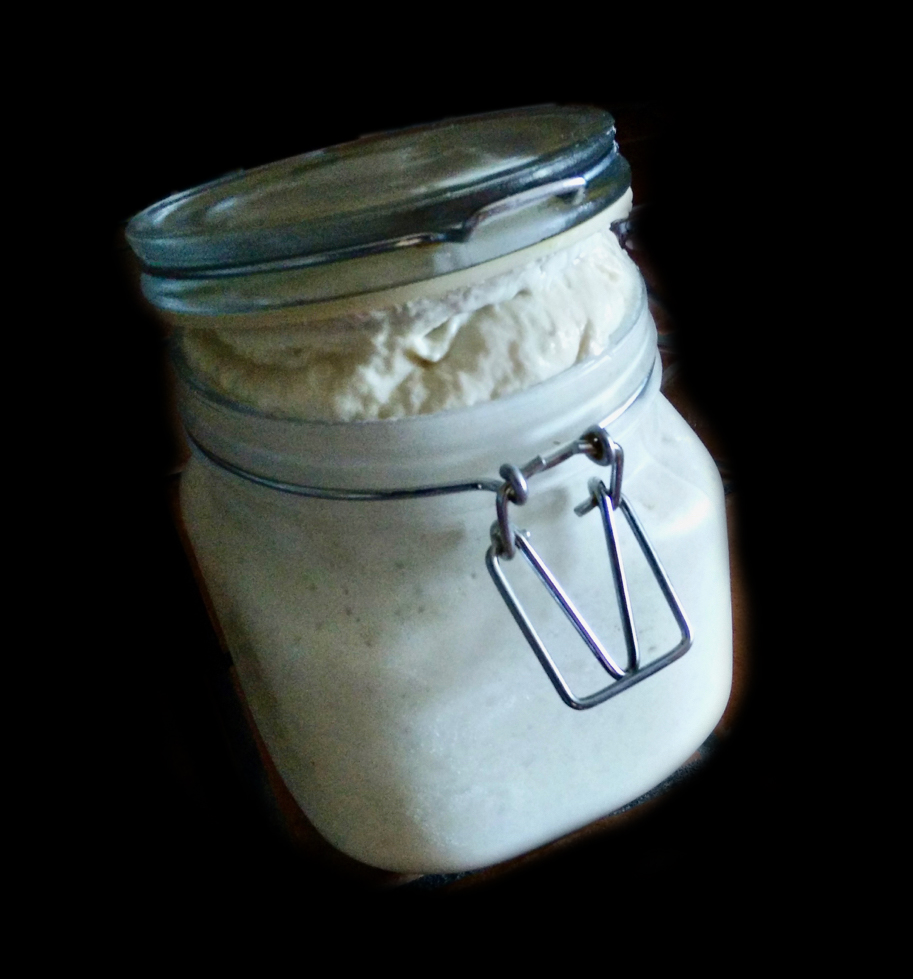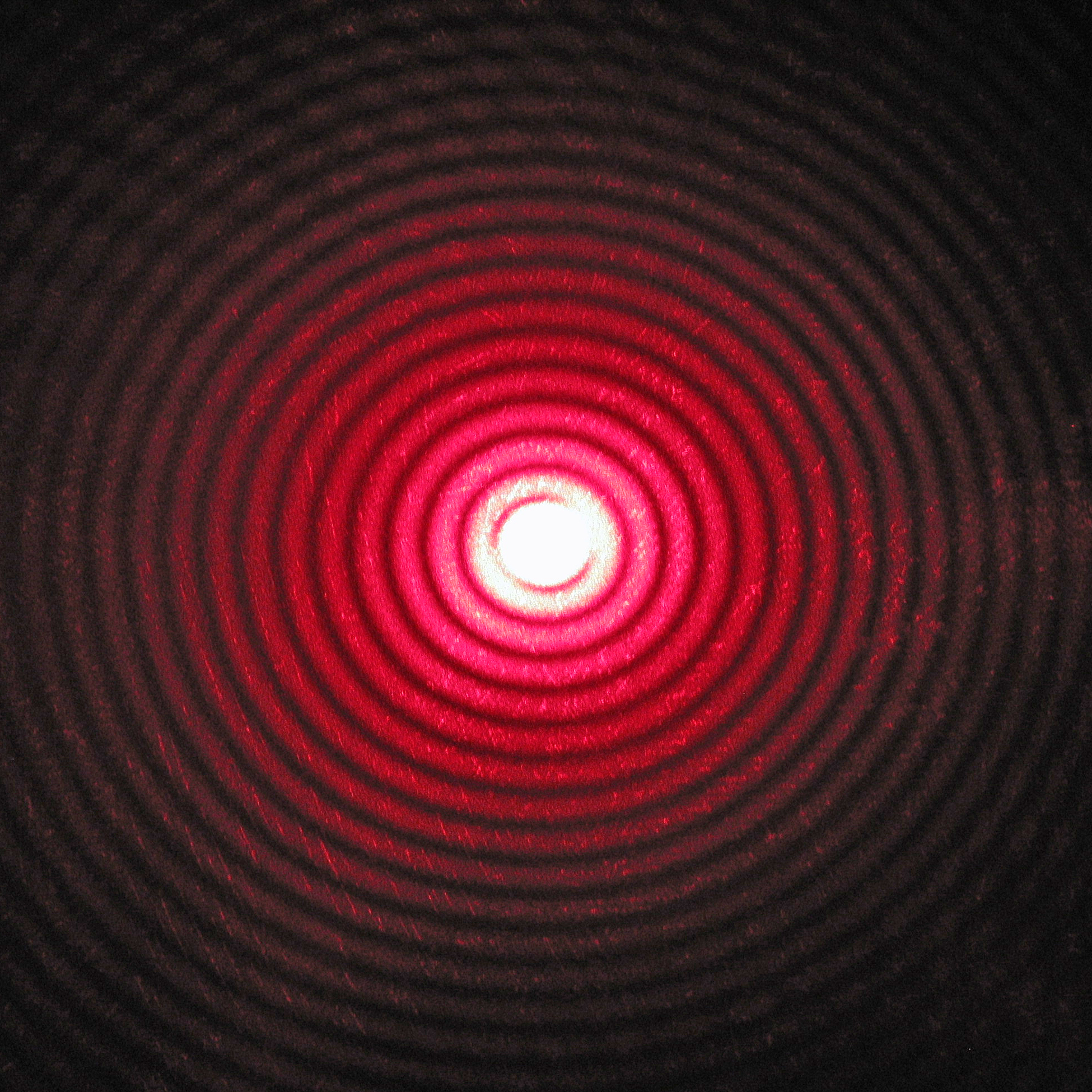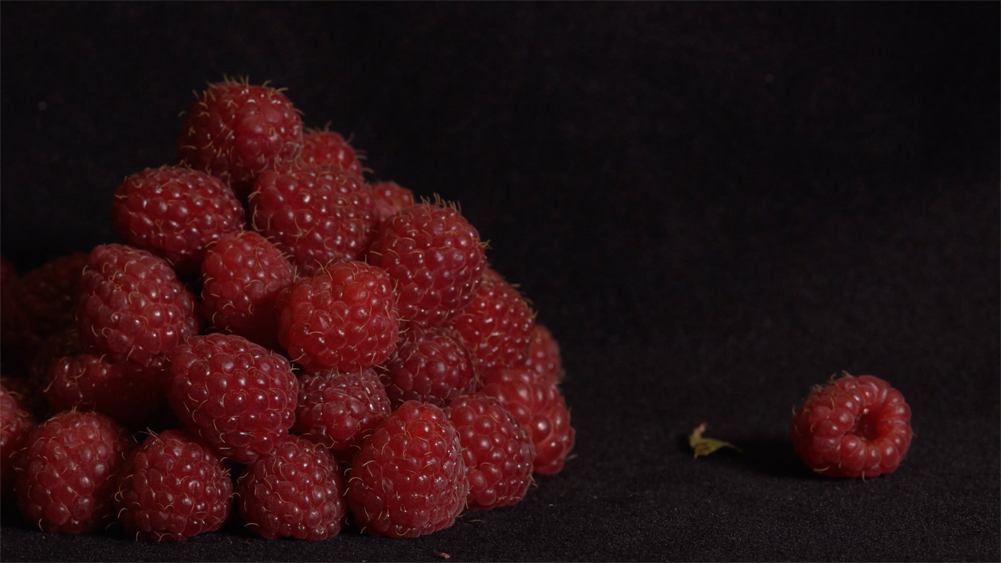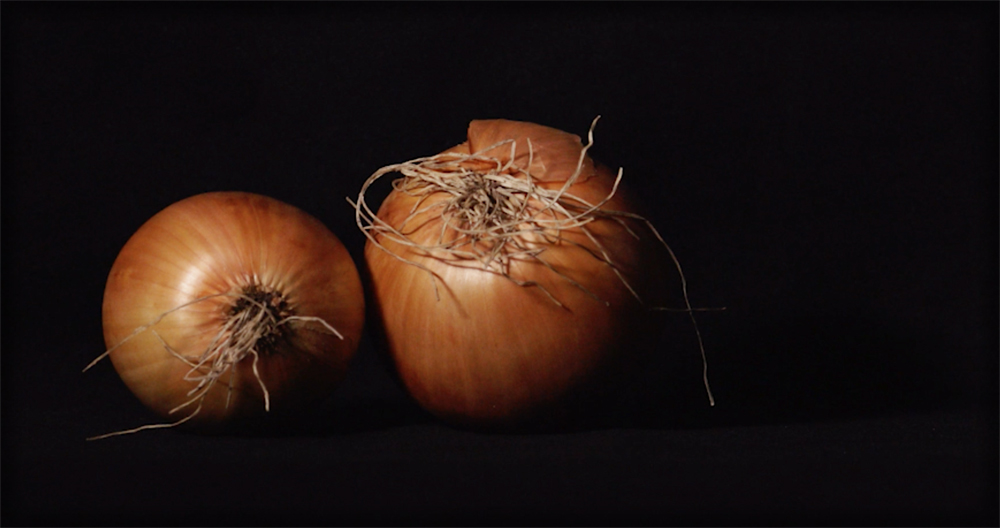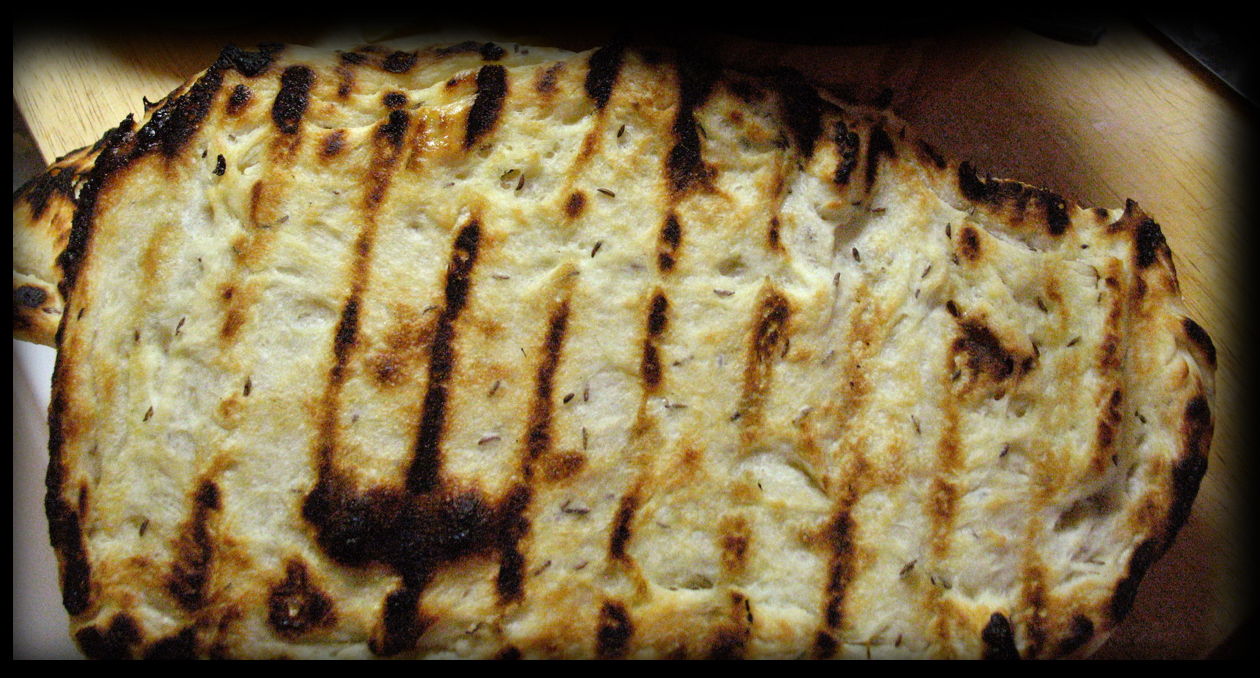Diffraction pattern of a red laser beam. CC-BY-SA Wisky.
The value of a diffractive analysis is in using the ‘interference patterns’ that emerge when two courses of research (and outputs from that research) are put into dialogue with each other. Those interferences suggest, as Haraway puts it, a history of difference—that is, differences in the variable processes and apparatuses that scholars and artists use to make knowledge. Just as electrons can be contradictorily ‘proven’ to be either waves or particles depending on the apparatus that is deployed, so can the differing ‘truths’ of food be shown to be dependent on the methods employed—whether these involve making and eating, describing social taste, or enabling individual perception.
In our dialogues about SDV and GIY, we noted a number of interferences—some that we relate to differences in our methods and models, and some that we relate to similarities. By partially unpacking those patterns, we aim to reveal how the practices of research-creation can continue to evolve and self-question, while also supporting pluralistic forms of understanding and remaining heterogeneous. In what follows, we briefly address four interferences in our work.
4. Weaving Together our Language Differences
Arriving at the end of this process, we are struck by the manner in which our reflections and dialogues have unfolded. It reveals another kind of diffraction. Our use of language differs not only because of our different practices, but also because of our mother tongues: we are both bilingual, but David’s first language is English, and Geneviève’s is French. The impacts of this difference are not trivial.
Our verbal conversations over Zoom have tended to be in French, as are many of our email exchanges. In these cases, Geneviève is more at home, using language in a more carefree fashion, whereas David often has to search for the words he needs. In the end, our conversations may become bilingual, but it is notable that the challenges of using a second language disrupts our automatisms. Searching for words is always a good thing; it forces us to transcend the obvious.
Nevertheless, as we developed this exposition in writing, we switched to English. This also prompted a switch in our two positions. In David’s natural linguistic habitat, meaning became foregrounded for him, as language choices arose fluidly. For Geneviève, writing in English demands that every word and every sentence is closely examined; her English texts are ultimately very different from those she would write in French. Rather than being fluid and ‘natural’, Geneviève’s language choices transform into questions that allow for new possibilities.
Our weaving together of different uses of languages is also apparent in our revisions and editing of each other. We add to each other’s text, but in doing so we create diffractions—places that call into question our natural choices and assumptions. This also reveals the entanglement of linguistic process within our respective apparatuses: Geneviève may have a more linear approach to language, whereas David is at ease in a rhizomatic, emergent context. Words are Geneviève’s raw material, whereas dynamic exchange and conceptual diagrams often allow David to express himself better. As the saying goes: our whole is greater than the sum of its parts.
In its complexity, our writing process is an integral part of research-creation. The resulting exposition is not a mere account of works and practices that exist elsewhere: it is the iteration of a work, a reflective point in a transformative process. Thus, the writing, the encounter of languages, and the diffractive analysis we do, all have a transformative effect.
1. Foregrounding Object, Foregrounding Process
Is a work of food art an object or a process? A dish served up, or a recipe enacted? By entering into a creative endeavour with food, we come to see it as both object and process. But for us as artist-researchers, is our aim to reach a specific outcome, or to enter into a state of being from which something might arise? While such a dichotomy is likely too strong—as are all dichotomies—it defines two poles toward which our practices diverge, illuminating a first diffraction. If our practices differ strongly in this way, it is attributable in part to personal inclination. But it may also be related to our respective institutional positionings, which bring quite different nuances to the very nature of ‘result’.
We note that David foregrounds process (versus object) in his work, as illustrated by his focus on iteration. That is, he tends to value revising and refining and experimenting with the questions, methods, and reflections within a cycle of research-creation, rather than reaching a particular ‘finished’ object. This imagined finished object may serve as an attractor that draws him forward, but he is less interested in perfecting that object in order to then share it publicly. Geneviève, on the other hand, has in mind a global object that is constructed by incremental additions. Of course, the final result differs from the initially imagined object. And this is even more evident given the collaborative nature of her work, because she does not entirely control images, music, or translations. In this sense, each addition brings a re-evaluation of the outcome, bringing a cycle of creative dialogue. Nonetheless, the next intended object remains in the foreground.
In discussing these differences, we find ourselves tracing back yet further in the histories of our ‘apparatus’—toward the objectives of doing food-centered research-creation in the first place. As Geneviève describes in her responses to David’s questions, research-creation became a way to formalize her personal fascination with food, and allowed her to ‘[open] up definitions and ways of being’. It also provides a legitimizing framework for this mode of food study (which has historically been undervalued by institutions) and contributes to a scholarly dialogue on methods and meaning regarding food. For David, who has often worked to expand the scope of food studies beyond the social sciences and humanities, research-creation offers a tool that brings to bear the materiality of food (itself undervalued in contemporary food studies circles). Moreover, because of the broad epistemic questions that food poses, and the range of fields across which it is studied, research-creation allows food practices to come into contact with other forms of critical scholarship, including science and technology studies, complexity studies, and systems theory.
2. The Thing Itself, the Representation of Thing-ness
As food is tied to materiality, it suggests a direct relationship with the ‘real’ world. At the same time, however, all human behaviour is tied to the symbolic and the representational. In both of our projects, we have played with this tension, starting from different points but in many ways converging on an intermingling of these aspects to question the human relationship with food.
In his practice, David uses physical food as a medium. He shares sourdough starter, bread, and both edible and non-edible food things with his participants/public. In the last iteration of GIY, his collaborators dropped dried and toasted fruit onto drumskins, while another slapped seaweed and agar onto the bell of his trombone. Food was translated into gesture, and from gesture into music. David’s aesthetic approach revolves around physicality and live embodiment, both of his own corpus and of those who co-create the performance. For the making of SDV, Geneviève also used real food, manipulating meat, picking raspberries, and cooking and cracking open lobsters. But this food is strongly mediated, first by its transformation into moving images and the use of language, and second by the digital format of the web-based work. It would be a simplification to say we have reality on the one side (GIY) and simulacrum on the other (SDV), but in what sense is this partially true, and what diffraction(s) does it reveal?
Although David uses material food in its direct manifestation, it nonetheless signifies other forms of both matter and meaning, and thus acquires a symbolic and mediated quality. Fermented foods stand in for the lively death of his friend Gigi, while the offer of pastes and powders and liquids becomes a gesture of mourning, hinting at the persistence of life after bodily existence. So, for David, the food in GIY is not only ‘the food itself’. It is also there to manifest something else, something that is related and re-enacted by the performance. For Geneviève, the movement takes the reverse direction. It is true that the foods shown on screen are pure representation, which can also be said of all words describing food—abstractions, devoid of material basis. At the same time, every person has sensory memories and imagination, which make it possible to take up representational content and understand it in light of their own experience. In this exchange, the abstract or the representational becomes material again. When we see raspberries and hear words that describe their taste, we can sense—in an embodied way—what it would be like to eat them.
Reality is everywhere, both in the so-called real world as well as in its representations. Even what we see as material food is already representational. This raises the question of our relationship to the world, especially of the world of materiality. Does food, both material and symbolic, bring us closer to reality?
3. Messiness of Material, Messiness of Language
The material world presents itself as phenomenon—that which is sensed. It does not inherently carry established meanings, and it exists beyond the meanings we can assign to it. When we do assign such meanings, they are inevitably hazy and imprecise. This is much less the case with language, however. Language of all sorts, as well as gestures and musical images, do carry significations, as do scientific and mathematical representations. We explore the consequences of this great divide when it comes to the practices we represent here, given that we both play with materiality and language, but differently from each other.
One of the things David likes about the material and gestural nature of food is that these two inseparable elements are easier to leave undefined than, for the most part, language. The open quality of the codes he uses—or, as he describes it, the ‘messiness’—invokes the need to negotiate toward a shared understanding. The meaning of a piece of work is not pre-given; rather, it becomes a conversation. The relationality demanded by mess also leaves space for pluralist knowledge; foregrounding materiality helps open such spaces. At the same time, having an audience makes it somewhat necessary to eventually arrive at a codification of meaning, even one that is open and dynamic. The fact that David can now describe GIY as a mourning process testifies to the transformation of materiality into a language-translatable reality (i.e., into words, gestures, or music). The messiness stays, but is accompanied by something else, a discreet and ever-changing interpretive framework that allows for the possibility of sharable meaning.
In Geneviève’s practice, things are more defined within an academic framework. As a researcher, she has striven to develop a precise and monosemic use of language. Research-creation is thus a process of learning to overcome that tendency—to leave silence, blanks, and ambiguity; in short, to allow space for interpretation and imprecision. Clearly, ‘mess’ or openness are also possible with language, and so, while ostensibly more codified, Geneviève’s work asks similar questions about openness. She achieves this by creating a fragmentary structure, but also by the superposition of codes. For instance, the images and the narration may tell two different stories, as is the case in ‘Escape,’ which invites a kind of diffractive questioning, even confusion, and thus lends itself to reinterpretation.
Ultimately, we note that SDV has a more explanatory approach than GIY, especially in the last zone (‘Offscreen’), which includes reflections on the process of the work. In that case, the openness of meaning is reduced, and a common ground of interpretation is proposed. In GIY, the messiness of the material world dominates formal explanation: David’s foregrounding of physical reality (food and bodies) results in an irresolution of meaning. But even taking into account these diffractions, meaning is both approached and revealed as a moving target.
